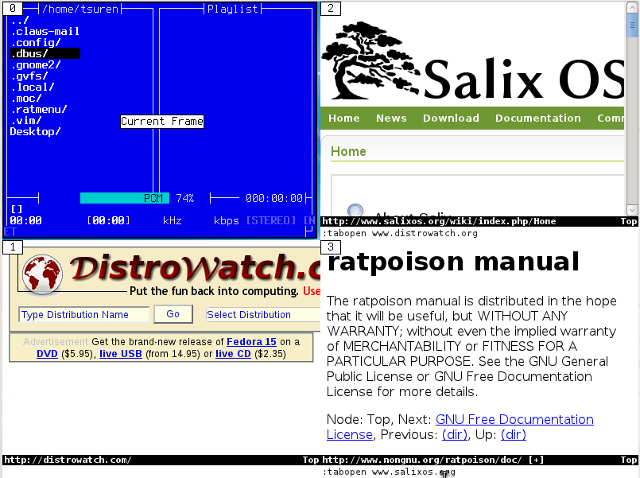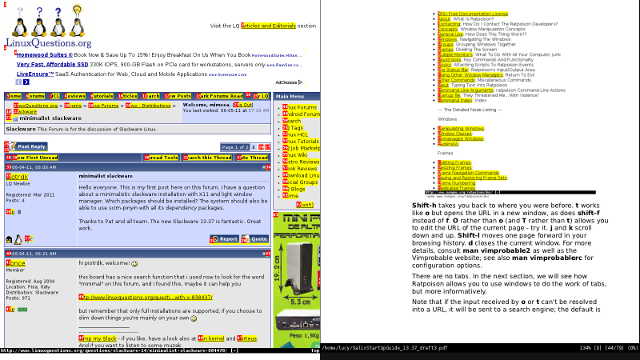Let's now see how ratpoison deals with several open windows. C-t e reveals all of them:
Notice that each one is associated with a number: typing it focuses on that window and hides all the others. (C-t w simply provides a list of open windows.) C-t C-t returns to the previous window. This is very useful indeed for switching rapidly back and forth between two apps - for instance, an editor and a browser - and is an example of how Ratpoison shines ergonomically. C-t k closes the current window, and C-t shift-k kills the current application. To see a list of commands, type C-t ?; for further detail, see also man ratpoison and the online manual, which we opened above with Vimprobable2.
To work with two or more windows together, Ratpoison allows the user to tile windows. C-t s splits the screen with the current window above whichever window was last open; C-t S splits them horizontally. These steps can be repeated to split the focused window further. C-t TAB (or C-t and an arrow key) moves the focus around, and C-t C-[arrow] swaps the tiled windows over. C-t Q undoes the splitting and allows the currently focused window to fill the screen. In practice, it's rarely useful to have more than one or two windows visible:



